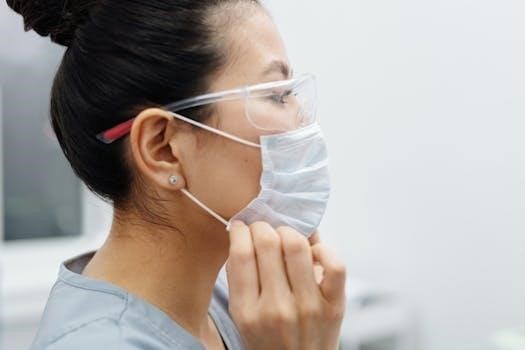Frequently Asked Questions on Infection Control

This section addresses common queries about infection prevention, covering topics beyond COVID-19. It explores practical strategies and measures essential for effective infection control practices in healthcare settings. These FAQs are designed to offer clear, concise, and useful information.
General Infection Prevention
General infection prevention encompasses a broad range of practices aimed at minimizing the spread of infections in various settings. Effective strategies include implementing standard precautions for all patient interactions, regardless of their infection status. These precautions involve consistent hand hygiene, the appropriate use of personal protective equipment like gloves and gowns, and safe injection practices. Additionally, maintaining a clean environment through regular and thorough cleaning and disinfection is essential. Furthermore, respiratory hygiene, such as covering coughs and sneezes, plays a crucial role in preventing transmission. These measures collectively help to reduce the risk of healthcare-associated infections. Screening patients upon admission helps to identify potential risks to prevent outbreaks. Adhering to these comprehensive practices is key for overall infection control. Proactive measures, alongside response-based strategies, contribute to maintaining a safe and healthy environment.
What are the most important strategies for preventing healthcare-associated infections?
The most critical strategies for preventing healthcare-associated infections (HAIs) revolve around consistent and meticulous implementation of infection control measures. Foremost among these is rigorous hand hygiene, which is paramount to interrupt the chain of transmission. This includes both hand washing with soap and water and using alcohol-based hand rubs. Furthermore, the appropriate use of personal protective equipment (PPE), such as gloves, gowns, and masks, is indispensable. Environmental cleaning and disinfection are also key, ensuring that surfaces and equipment are properly sanitized. Additionally, implementing effective isolation precautions for patients with known or suspected infections is vital. These measures, coupled with surveillance and monitoring for HAIs, are foundational to a comprehensive infection prevention program. Education and training for healthcare staff on these strategies also play an essential role in minimizing risks. Adherence to these guidelines significantly reduces the incidence of HAIs.

The Importance of Hand Hygiene
Hand hygiene stands as a cornerstone of infection prevention, playing a pivotal role in reducing the transmission of pathogens in healthcare settings and beyond. Proper hand hygiene, whether through washing with soap and water or using alcohol-based hand rubs, is a simple yet highly effective measure. It interrupts the chain of infection by removing microorganisms from hands before they can be transferred to other surfaces or individuals. Healthcare-associated infections are often spread through contact, making hand hygiene a crucial preventative action. Consistently following hand hygiene protocols significantly diminishes the risk of infection among patients, healthcare workers, and the general public. The act of cleaning hands needs to be performed before and after every patient contact, after touching contaminated surfaces, and after removing gloves. Education and adherence to these practices are fundamental in maintaining a safe environment.
How does hand hygiene contribute to infection prevention?
Hand hygiene is a vital component of infection prevention, primarily because it directly targets the most common route of pathogen transmission⁚ contact. By effectively removing transient microorganisms from the hands, hand hygiene prevents the transfer of bacteria, viruses, and fungi to patients, surfaces, and other individuals. This action breaks the chain of infection, significantly reducing the risk of healthcare-associated infections. Regular and correct hand hygiene practices, using either soap and water or alcohol-based hand rubs, are essential in decreasing the spread of infections. The practice should be performed before and after patient contact, after touching contaminated surfaces, and following the removal of gloves. Hand hygiene protects both healthcare workers and patients and plays a critical role in maintaining a safer healthcare environment. Therefore, consistent adherence to hand hygiene protocols is crucial for infection control.
Isolation Precautions for Specific Infections
Isolation precautions are crucial in preventing the spread of infectious diseases within healthcare settings. These measures are tailored to the specific mode of transmission of different pathogens, ensuring appropriate barriers are in place. For instance, infections transmitted via respiratory droplets, such as influenza or COVID-19, require droplet precautions, including mask use and maintaining a specific distance. Conversely, contact precautions are necessary for infections like MRSA, which are spread through direct contact, necessitating glove and gown use. Airborne precautions, involve the use of specialized respiratory protection, including N95 masks and negative pressure rooms, for diseases like tuberculosis. Understanding and adhering to these specific precautions is vital for preventing the transmission of infectious agents and safeguarding both patients and healthcare providers. Proper implementation of these protocols is key to effective infection control.
What isolation precautions are needed for patients with MRSA?
Patients diagnosed with Methicillin-resistant Staphylococcus aureus, commonly known as MRSA, require specific isolation precautions to prevent the spread of this antibiotic-resistant bacteria. The primary strategy involves implementing contact precautions, which include wearing gloves and gowns upon entering the patient’s room. These protective measures are crucial because MRSA is primarily transmitted through direct contact with an infected person or contaminated surfaces. Healthcare personnel must also perform meticulous hand hygiene before and after any patient interaction. In addition, it is essential to limit the movement of the patient within the facility to reduce the potential for spreading the infection to other individuals. The use of dedicated patient care equipment, and thorough cleaning of the patient’s room, further helps to minimize the risk of transmission and ensure the safety of everyone in the environment. Consistent adherence to these protocols is vital in controlling the spread of MRSA.
Enhanced Barrier Precautions
Enhanced Barrier Precautions represent a crucial infection control strategy, primarily implemented to curb the transmission of multi-drug resistant organisms, often referred to as MDROs, within healthcare environments, especially in nursing homes. These precautions typically involve the consistent use of gowns and gloves during interactions with patients who are known to be colonized or infected with MDROs. This approach extends beyond standard precautions and is designed to provide an additional layer of protection. The focus on gowns and gloves arises from the fact that MDROs are frequently spread through direct contact with contaminated surfaces and body fluids. While other infection control measures are vital, enhanced barrier protocols aim to reduce the risk of transmission by physically blocking the pathway of the organisms. The adherence to these guidelines is essential to ensure the safety of both patients and healthcare staff.
What are Enhanced Barrier Precautions and when are they used?
Enhanced Barrier Precautions are specific infection control measures that go beyond standard precautions. They are implemented to prevent the spread of multi-drug resistant organisms, also known as MDROs, particularly in settings like nursing homes. These precautions primarily involve the consistent use of gowns and gloves when interacting with patients identified as carriers of MDROs. This added layer of protection is utilized during all care activities that might involve contact with the patient or their environment. The goal is to interrupt the chain of transmission by preventing direct contact with potentially contaminated surfaces or body fluids. Enhanced Barrier Precautions are employed when a patient has a known MDRO infection or colonization, and they remain in effect as long as the patient is considered a carrier. These measures protect both patients and healthcare providers.
Infection Control Assessment and Response (ICAR)
An Infection Control Assessment and Response, or ICAR, is a structured process designed to evaluate infection control practices within healthcare facilities. These assessments are typically provided as a free, non-regulatory service, often by public health departments. The purpose of an ICAR is to identify gaps in current infection prevention protocols, offer education, and provide updated resources and recommendations for improvement. The ICAR process involves a thorough review of a facility’s existing policies, practices, and the physical environment, with the aim of enhancing patient safety and preventing the spread of infections. Both proactive and reactive ICARs are conducted, with the former aimed at routine assessment and the latter deployed in response to specific outbreaks. The ICAR process includes education, updated prevention materials, and specific guidance tailored to the specific setting.
What is an ICAR and what does it involve?
An Infection Control Assessment and Response, commonly referred to as ICAR, is a systematic evaluation and consultative process focused on infection prevention within healthcare settings. It is a tool utilized by public health agencies to provide support and guidance to facilities seeking to enhance their infection control practices. An ICAR typically involves a comprehensive review of a facility’s existing protocols, infrastructure, and adherence to recommended infection control guidelines. The assessment may include observing staff practices, reviewing policies and procedures, and analyzing data related to healthcare-associated infections. Following the assessment, an ICAR team will provide feedback, education, and specific recommendations to the facility. This can include suggestions for improving hand hygiene, environmental cleaning, and isolation precautions, with a goal to prevent the introduction and spread of infectious agents. The process is designed to be collaborative and supportive, aiming to improve patient safety and promote a culture of infection prevention.
Specific Pathogen Control
Specific pathogen control focuses on targeted measures to prevent the spread of particular infectious agents. These measures are tailored to the unique characteristics of each pathogen, considering its mode of transmission, virulence, and potential for causing outbreaks. Control strategies often involve a combination of approaches, including isolation precautions, environmental disinfection, and antimicrobial stewardship. For example, controlling the spread of C. difficile requires meticulous hand hygiene and thorough environmental cleaning, given its ability to form spores. Specific strategies might also include the use of targeted antibiotics to treat infections while minimizing the risk of resistance. It’s important to implement control strategies specific to each pathogen to prevent its transmission within healthcare settings. This includes monitoring infection rates, developing and reinforcing infection control policies, and educating healthcare personnel on best practices for prevention. The goal is to prevent, control, and effectively eradicate infectious agents to protect patients and healthcare workers.

How is the transmission of C. difficile prevented?
Preventing the transmission of C. difficile involves a multi-faceted approach focusing on breaking the chain of infection. Effective hand hygiene with soap and water is crucial because alcohol-based hand sanitizers are not effective against C. difficile spores. Thorough environmental cleaning and disinfection using appropriate agents like bleach are essential to eliminate spores from surfaces and equipment. Isolation precautions, such as placing patients in single rooms and using contact precautions like gowns and gloves, are critical to prevent spread. Antimicrobial stewardship is vital, as unnecessary antibiotic use can disrupt normal gut flora and increase susceptibility to C. difficile. Prompt and accurate diagnosis is key to rapid intervention and reducing transmission. Educating healthcare workers, patients, and visitors about infection control measures is paramount. Monitoring infection rates and implementing corrective actions also aid in preventing spread. These measures combined work together to reduce C. difficile transmission.
COVID-19 Transmission

COVID-19 primarily spreads through respiratory particles, which are released when an infected person coughs, sneezes, talks, or even breathes. These particles can be inhaled by others or land on surfaces, potentially leading to infection if someone touches those surfaces and then their mouth, nose, or eyes. Close contact with an infected individual, especially in poorly ventilated areas, significantly increases the risk of transmission. The virus can also spread through aerosols, tiny particles that can remain suspended in the air for longer periods, especially in enclosed spaces. Understanding that transmission occurs through these various routes highlights the importance of using preventive measures. These measures include maintaining physical distance, wearing masks, ensuring proper ventilation, practicing good hand hygiene, and isolating when sick. Public health efforts focus on limiting these transmission routes to control the spread of the virus and protect populations.
How is COVID-19 primarily spread?
COVID-19 is primarily spread through respiratory droplets and aerosols produced when an infected person coughs, sneezes, talks, or breathes. These droplets and aerosols can travel through the air and land in the mouths or noses of people nearby, or they can be inhaled directly into the lungs. The risk of transmission is higher in close-contact settings, such as indoor gatherings, crowded places, and poorly ventilated areas. Transmission can also occur indirectly when a person touches a contaminated surface and then touches their face, although this is not the primary route. The virus can persist on surfaces for varying periods, depending on the material and environmental conditions. Therefore, frequent hand hygiene and surface disinfection are important measures to reduce the risk of spread. Effective infection control strategies include maintaining physical distance, wearing masks, ensuring proper ventilation, and practicing hand hygiene. These measures are crucial in preventing the transmission of COVID-19.